Ever wondered what the phrase, 'mad as a March hare' means? Where did this odd saying come from?
The saying refers to the seemingly erratic boxing displays of hares in March, as they begin to exhibit mating behaviour. It is one of Britain's most memorable wildlife spectacles. But what's behind it?
Our guide to explains why and when hares box, and the best places to see them in the UK.
Out and about this month? See what's out there in our feature on the best of the British countryside in March, our March foraging guide: best foods to find and recipe ideas and the first signs of spring.
Why do hares box?
Most people would assume that boxing is the courtship display of male hares, eager to prove themselves a worthy mate to females. It may surprise you to find out that it's in fact the females who instigate boxing as a way to fend off the mating urges of the males.
Hares are usually solitary creatures but come March/April time, you can see females standing on their hind legs and boxing like champions, giving male hares the unmistakeable message, 'no, thank you.'
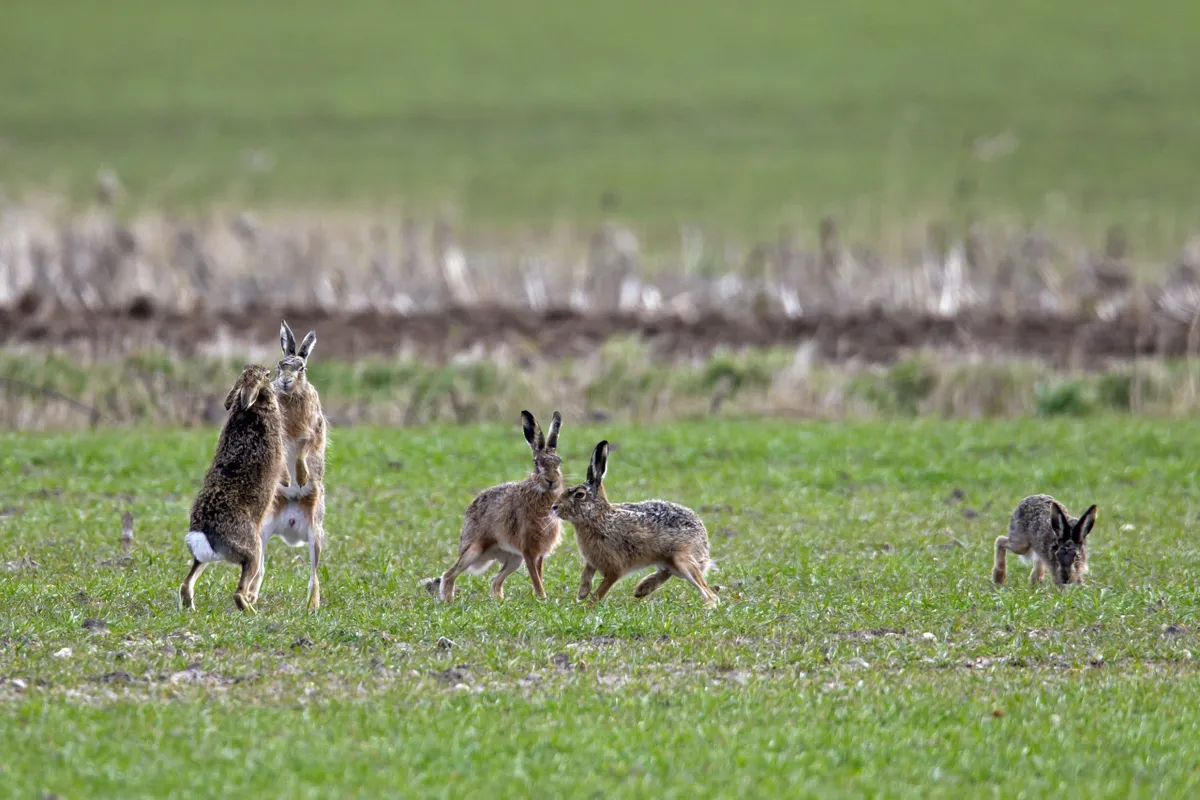
What species of hare are found in the UK?
There are three types of hare in the UK: the brown hare, the mountain hare and the Irish hare. The brown hare is the most common and you're most likely to see these on arable farmland and large, flat expanses of grassland. The open plains of Suffolk, Norfolk and Cambridgeshire are a stronghold for brown hares, as are the Marlborough Downs in Wiltshire.
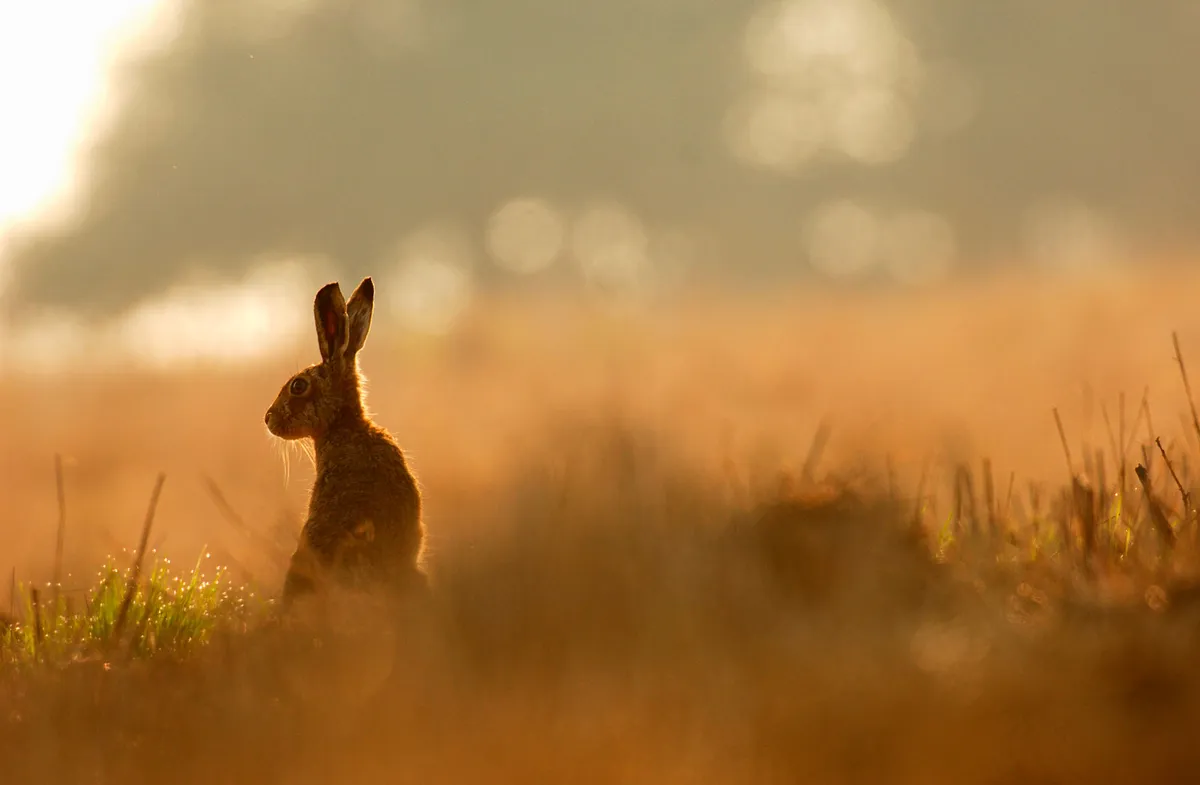
Brown hares have golden brown fur and a white belly, and they have long ears with black tips. At full pelt, they can reach speeds of up to 40 miles per hour.
Track them by looking out for tufts of fur caught in brambles and barbed wire, or their droppings on the ground, which resemble those of a rabbit, but are larger, with a slightly tapered end. The best time to spot hares is either first thing in the morning or early evening.
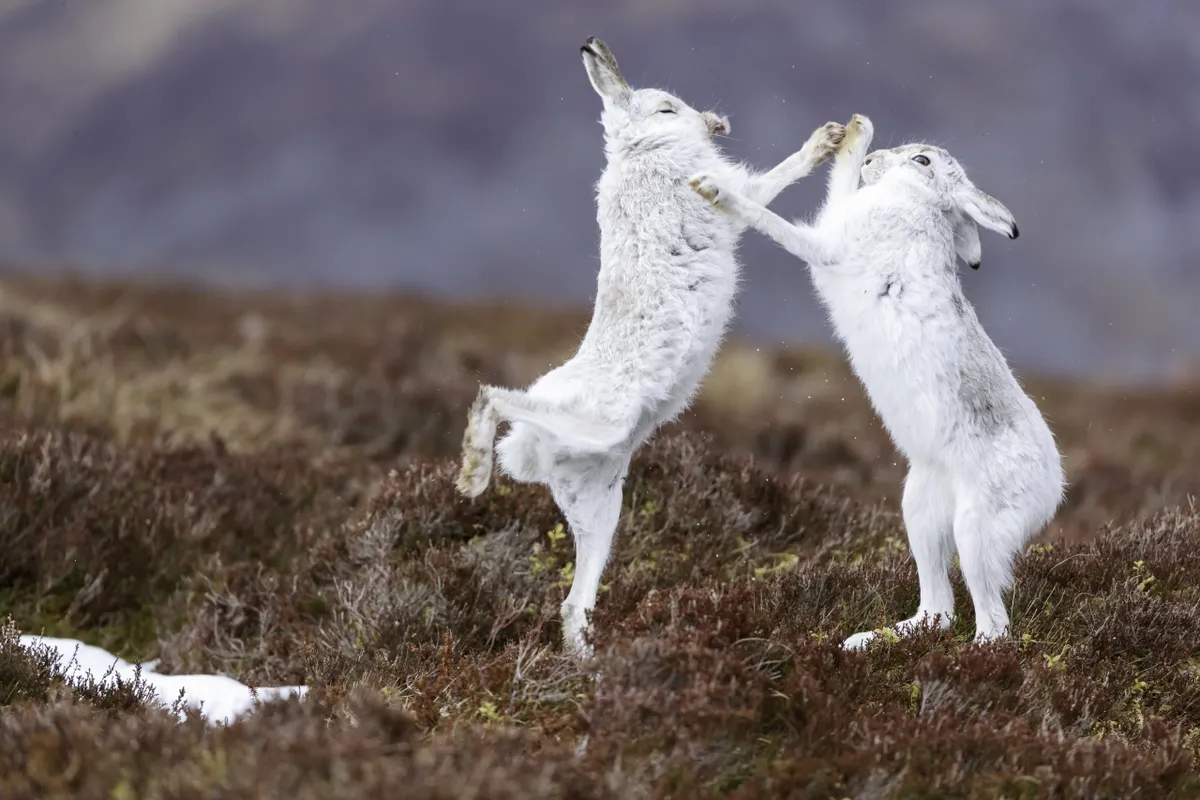
White hares are most commonly seen in Northern England and Scotland.
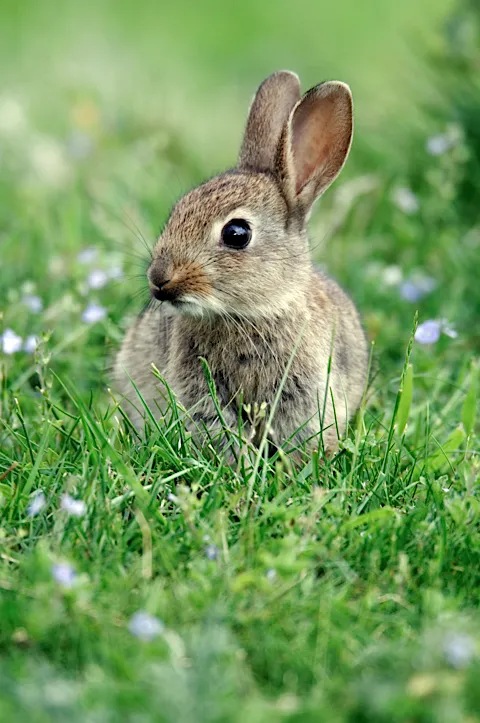
Where to see hares in the UK
Lyme Park, Cheshire
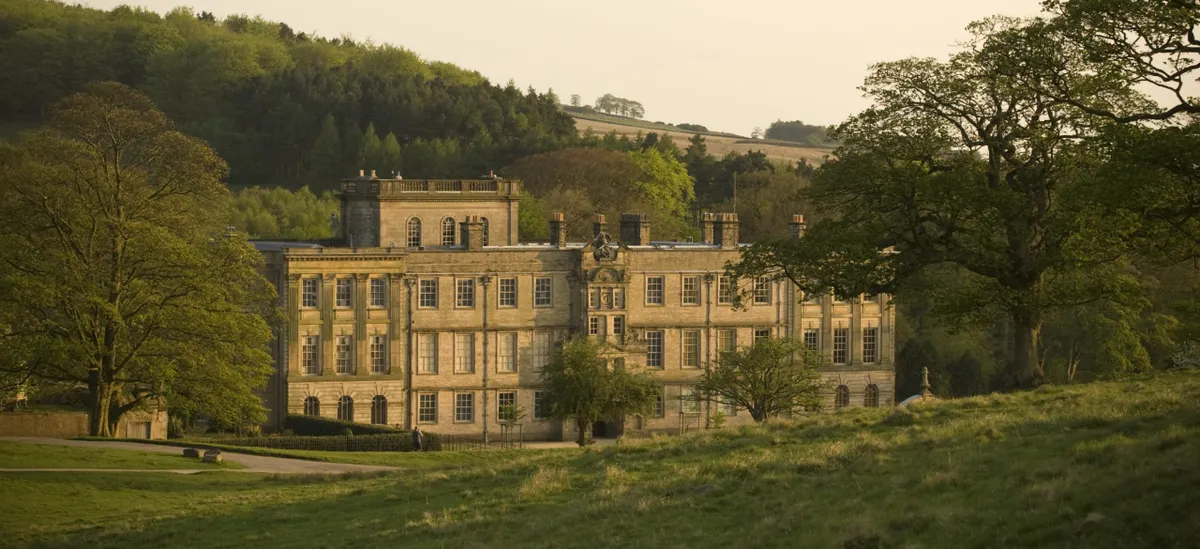
This National Trust property is home to a thriving population of brown hares. On the edge of the Peak District, nestling within sweeping moorland, Lyme Park is a magnificent estate, and was used as the location for Mr Darcy's glorious Pemberley home in the BBC production of Pride and Prejudice. nationaltrust.org.uk/lyme
RSPB Havergate Island, Suffolk
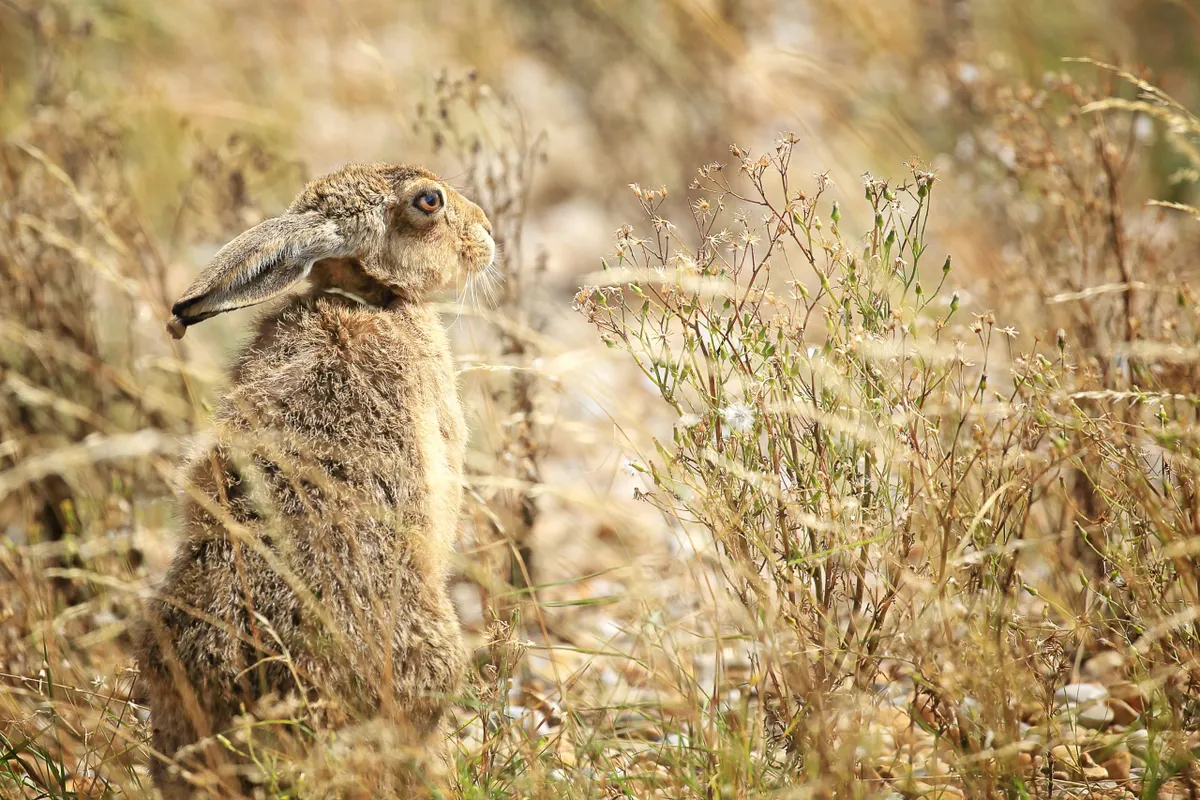
This small island in the River Ore is usually famous for its breeding avocets and terns, which can usually be seen during spring and summer. The island also has a large population of brown hares - you're in with a good chance of spotting one at close range. Access is by boat only - booking is essential, boats leave Orford Quay. rspb.org.uk/havergate-island
Anglesey, North Wales

Another good location for seeing brown hares - in fact the North Wales Wildlife Trust are inviting people to count the number of hare sightings on the island, as part of their North Wales Brown Hare Project.
RSPB Dove Stone, Derbyshire
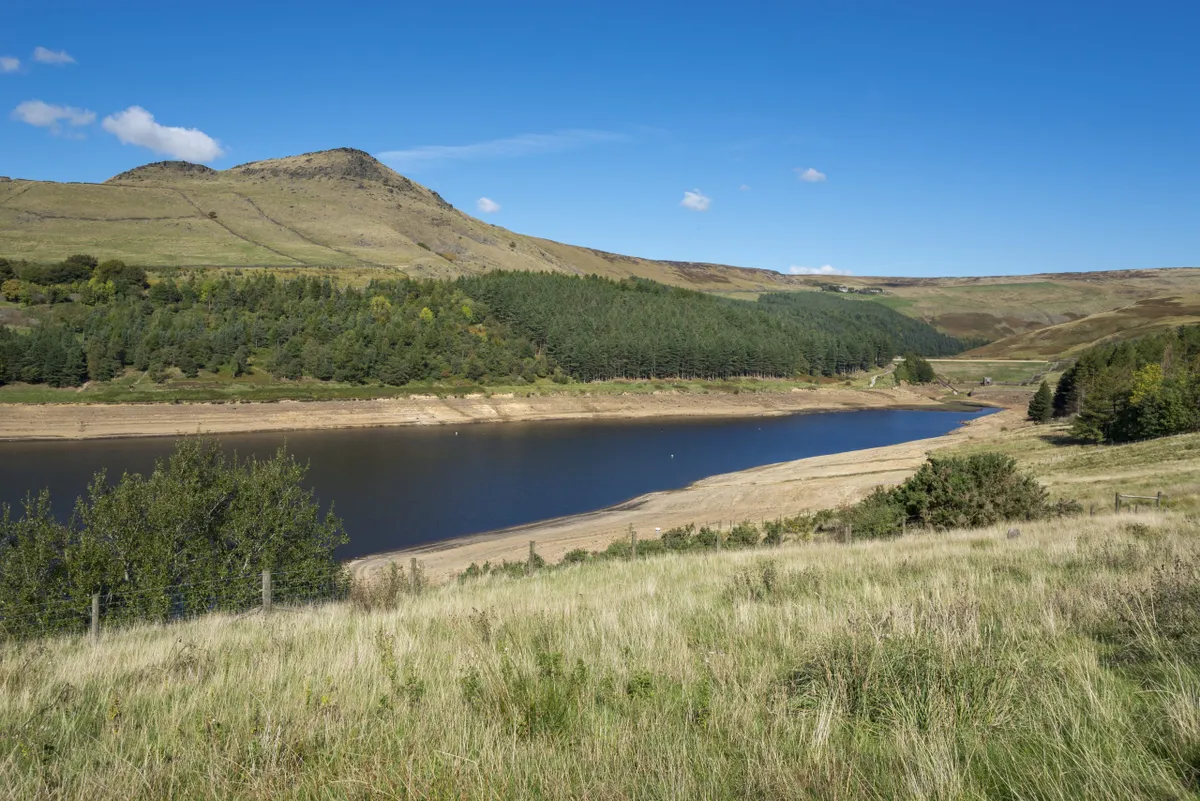
The Peak District is the only place in the whole of England where mountain hares are found. Over winter their fur is a dazzling white to blend in with the snow, and around this time of year, they turn their usual brown again. Dove Stone has a stunning landscape of towering hills, sheer rock faces and swathes of open moorland, a perfect backdrop for spotting boxing mountain hares. www.rspb.org.uk/dove-stone
Rathlin Island, Co Antrim
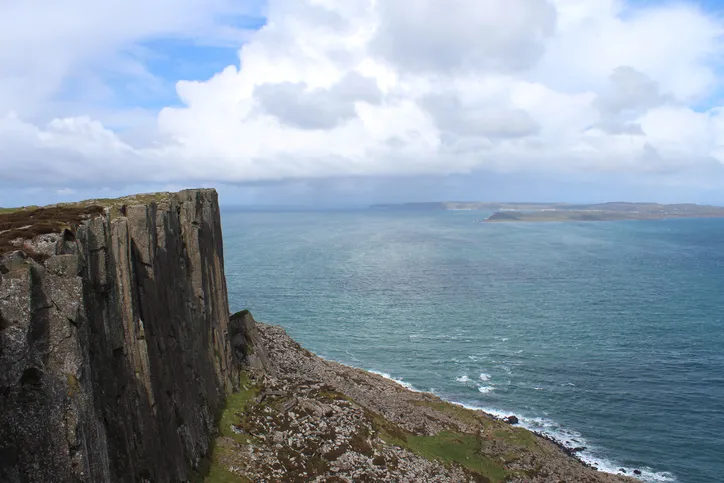
This beautiful island lying off the coast of Country Antrim is teeming with wildlife: dolphins, porpoises, puffins and razorbills all thrive here. It is also a great place to spot the Irish hare, which has shorter ears and its tail is all white, not just the under-side as with the brown hare.
Main image credit: Hares boxing in Suffolk./Credit: Getty
